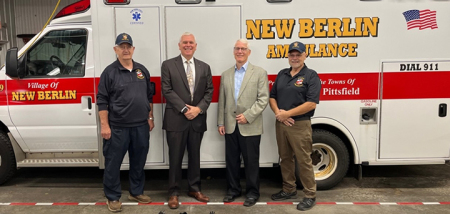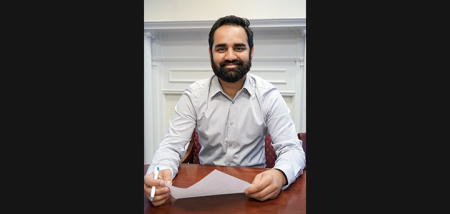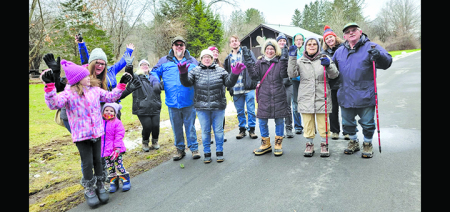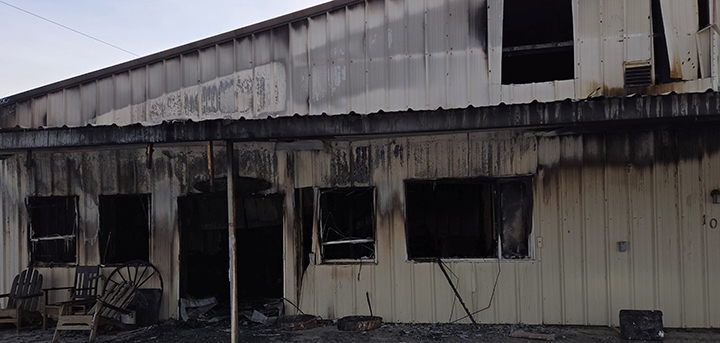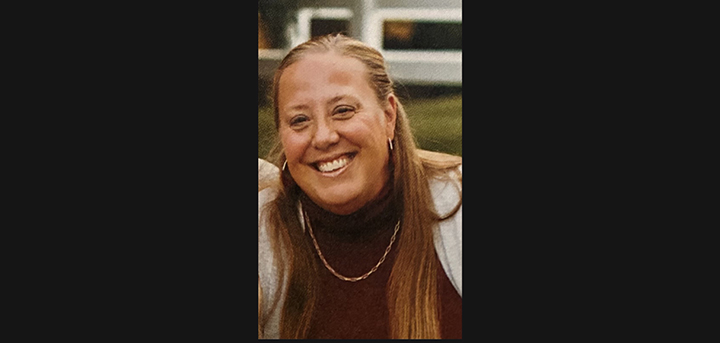PROJECT CHENANGO: Leading Chenango
Published:
November 12th, 2015
By Melissa Stagnaro
Special to The Evening Sun
stagnaro.melissa@gmail.com
CHENANGO – What do a dairy farmer, a jeweler, a school bus driver, a retired teacher, a chiropractor and a former journalist have in common? They are among Chenango’s top elected leaders.
For the last 18 years and counting, dairyman Lawrence Wilcox has been one of them. The Oxford native said he had no aspirations of entering politics when, after college and a stint in the Air Force, he returned to his hometown and became the fourth generation to farm his family’s dairy. All that changed around 1979, when he was asked to serve on the town’s planning board.
“It’s been a steady progression from there,” the Republican said.
In 1989, he assumed a seat on Oxford’s town council and, in 1998, he was elected to his first term as town supervisor. It is an office he will continue to hold for at least another four years based on the outcome of last week’s election, where he defeated opponent Fred Lanfear by a count of 581votes to 338.
It was one of the hottest races in the county, as Wilcox is not only Oxford Town Supervisor but also chairman of Chenango’s Board of Supervisors. The 23-person board governs the county and administers its nearly $90 million budget.
The structure – which includes a representative from each of Chenango’s 21 townships and two from the city of Norwich – was once commonplace throughout New York, but has become a rarity. According to the New York State Association of Counties, Chenango is one of but 8 counties outside of New York City still administered by an elected legislative body. The other 49 either elect a county executive or appoint a manager or administrator, whether by charter or county law.
According to Wilcox, members of the public have stepped forward to question whether the structure is still the most viable form of government for Chenango on more than one occasion during his tenure on the board.
“It’s never really been considered very closely,” he said.
The reason, he explained, is the cost associated with a professional administrator.
“Financially, I don’t think the county could operate any cheaper with a county executive,” he said. The county currently pays each individual supervisor $12,000 per year and approximately $36,000 to the chairman. This is on top of the stipends paid by their individual towns.
Wilcox, who headed the county’s finance committee for many years before becoming chairman, is keenly aware of the financial impact of any decision at the county government level. But while he considers the financials in favor of the current structure, there is another reason he considers it the best form of government for Chenango.
Its biggest strength, he said, is the “personal interaction of supervisors with their constituents” and on the county level. It is this personal interaction that gives a small town an equal voice in committees, regardless of how many weighted votes they carry. This, he said, would be lost in a different structure, where small townships would be grouped together under one legislator.
“There is a disconnect with the legislator,” he explained.
As chairman, Wilcox’s focus has been on getting the county government on firmer financial footing. Under his leadership, they operate under six financial precepts, which include maintaining no debt, staying below the mandated tax cap, maintaining sufficient surplus levels and providing mandated services, along with those that are not mandated but provide needed services for county residents.
As a result, Chenango County has been recognized by the state as one of the top counties in terms of fiscal position. Last year, Chenango was ranked 3rd on the list; this year, it slipped to 4th. Why the lower ranking?
“We used surplus funds for a capital project,” explained Wilcox, something the state frowns upon.
That decision is one Wilcox stands firmly behind because of the long-term savings the county will realize as a result of the project in question. The project, relocating the court system, was one the chairman said had sat on the back burner for more than 20 years.
“When I started, I felt that had to be a priority,” he said.
The scope of the project included both moving the court system to the Eaton Center and renovating the space the courts previously occupied in the County Office Building. This allowed Mental Health to consolidate its services rather than continuing to rent space elsewhere. In the 2016 budget cycle alone, the move will save $87,000, according to Wilcox.
“Over the course of the lease, it will be several million (in savings),” he said, and help keep the Eaton Center viable.
According to the chairman, savings were also realized during the course of the project, due to the efforts of Director of Public Facilities Julie Gates.
“She saved Chenango County thousands and thousands of dollars,” Wilcox said.
TAX CAP
According to Wilcox, the 2 percent tax cap imposed by the state has been a strain on the county because there has not been a corresponding decrease in mandates.
“If we could make our own choices, it would make it a lot easier to operate under the tax cap,” he said.
He points at the $25 million, more than a quarter of the county’s overall budget, allocated to the Department of Social Services as an example.
“That’s an expense that we can’t fight,” the chairman said.
He also worries about the impending minimum wage increase to $15 an hour.
“Personnel is the biggest expense any organization has,” Wilcox said. The county, which is Chenango’s single largest employer with upward of 550 employees, is poised to feel it more than most.
The county has been very strategic about filling vacancies as department heads and staff near retirement.
“We’ve streamlined a lot of departments, and not had to incur any layoffs in the process,” he said. He’s proud of the fact that, while the workforce is smaller than it was when he first walked into the building as a supervisor 18 years ago, they are still able to provide the services residents need.
The administration is also always looking for places where there can be more cooperation and collaboration between departments – both within the county structure and with outside entities.
“I’m not a fan of consolidation, but I am a fan of shared services,” he explained. “There are an awful lot of things we all do where we can all work together.”
Wilcox points at the way in which the county highway department and local departments work together, sharing services and equipment, as an example.
“I think we could do the same thing,” he said, of other aspects of county government.
The highway system is something in which Wilcox places great importance, and hopes to be able to fund better in the future. It’s something he says impacts every single resident, whether they drive or not. It’s also the first impression for visitors.
“Every facet of commerce is based on being able to travel,” he explained.
City of Norwich Democrat James McNeil echoed Wilcox’ sentiments about the highway system. This despite the fact that no county highway runs through the city.
“It brings everything here,” he explained.
He also sees it as an example of how the county’s structure helps bring together Chenango’s individual municipalities.
“We’re all small parts of the greater whole,” he said.
McNeil, a business owner and jeweler by trade, had an early start in politics.
“I was 8 years old and delivered sample ballots in Ward 4,” he said, remembering how he helped his father, then a county supervisor, run for office.
It wasn’t until much later, of course, that he decided to make his own run for public office. He’s represented Norwich’s wards 1, 2 and 3 since 2000.
He and his colleague Bob Jeffrey, are in a somewhat unique position. Unlike the town supervisors they share the county board table with, they don’t play an official role in city government. That doesn’t mean, however, that their role isn’t an important one, McNeil explained.
“I’m not ‘employed’ by the city of Norwich, but the city is a part of the county and they need representation (on the county level) as any town needs representation,” he said.
His philosophy, he explained, is to help constituents any way he can. That is often helping people connect the dots between the city and county governments.
“That can involve anything from traffic concerns to making sure an elderly resident gets the help they need, and everything in between,” he said.
According to McNeil, the county has more to offer than many people fully realize. This includes Preston Manor, a facility he calls Chenango’s “hidden gem.”
For him, it always back to people.
“Behind the scenes, the employees are a great asset,” he said. “They do their job and they do it well.”
Each contributes greatly to the myriad of services the county offers residents, he added. He invites all residents to explore the county website, www.co.chenango.ny.us, to explore the services provided by each department.
What is McNeil most proud of when it comes to his hometown?
“The great diversity of good people that want to improve the quality of life,” McNeil said. He includes everyone from business owners and professionals, to neighbors and those who take part in the number of non-profit organizations working for the good of the community in that list.
Also included, one would assume, are those willing to step up to public office for the first time.
TOMORROW’S NORWICH
Like McNeil, Christine Carnrike is following in her father’s footsteps. In November of 1968, George Carnrike was elected mayor. Last week, 47 years later, his youngest daughter was elected to that office.
A long-time city resident, Carnrike said she felt compelled to run out of concern for Norwich’s future and a desire to preserve its charms for generations to come.
“I love Norwich,” she said. “It is my home.”
During her campaign, she connected with voters.
“The people I met…shared their concerns with me – loss of opportunity for families, disengaged youth, crumbling neighborhoods and an overall lack of prosperity,” she said. “A vision is needed to reverse our decline and restore our community.”
Her message resonated with voters. Their support enabled her to declare an early victory when she defeated incumbent mayor Joseph Maiurano two to one in September’s Republican primary. She was unopposed in the general election on Nov. 3.
She is grateful for the opportunity, she said, but at the same time knows she’ll have her work cut out for her.
“When I officially take the oath of office…I will be inheriting a fiscal mess with a shaky foundation,” the mayor-elect said.
According to Carnrike, the city has chosen to eat through its surplus over the last few years to avoid exceeding the tax cap rather than adequately curb spending or exploring how to operate more efficiently and effectively.
“Because of this, the 2016 budget may very well incur a double-digit property tax increase with possible cuts to service,” she said.
That’s a course of action she considers a “recipe for continuing and steady decline” for the city.
“We need a sustainable and growing tax base with efficient services to pursue growth opportunities,” she said.
“Looming property tax increases combined with threats of cuts to service is not the way to generate positive change and to promote a commitment to our community.”
She said it will take due diligence once she gets in office, to make sure that city government can both operate efficiently and meet the needs of residents and businesses alike.
“We cannot rely on grants to sustain the city,” she said. “Grants are taxpayer money, too, and they are needed; however, I have witnessed a reliance on grant funds that is unrealistic for continued prosperity.”
Carnrike’s soon-to-be predecessor, Mayor Maiurano, has long been an advocate for consolidation, but was never able to garner the needed support to bring it past the conceptual stage. Carnrike isn’t ruling out pursuing those same discussions, but said there’s a lot of dialog that needs to take place first.
“The solution to the problems facing our city will require the collaboration, cooperation and innovation of all officials, residents and business owners,” she said. “Establishing or re-opening the lines of communication…is vital before beginning the process of finding possible areas for consideration of consolidated services.”
FUTURE LEADERS
As Chenango prepares for its future, who will lead it? That’s a question Jill Eddy is helping to answer in her role as facilitator of Leadership Chenango. The program, funded through the Chenango Foundation, has been developing Chenango’s future community leaders since 1988.
“The goal of Leadership Chenango is to take local community members who want to do more and give them the tools and resources to do just that,” said Eddy, who took over the program from longtime facilitator Judie Wright this year.
The ten-month program helps participants develop leadership skills in a way that is laser-focused on Chenango. In 18 class sessions, participants are exposed to a broad range of topics including everything from health care and law enforcement to education, agribusiness, social services and local government.
“We get to go behind the scenes and gain a perspective that most people will never have the opportunity to do,” Eddy said.
Something that sets the program apart is the opportunity for participants to see and experience the subject matter first hand – particularly during the three days spent touring the county and visiting businesses, farms and other points of interest. According to Eddy, this is always an eye opening experience.
“Most class members don’t realize how diverse Chenango County really is,” she said.
Eddy knows first hand the impact the program has on participants. She herself is a graduate of Leadership Chenango’s Class of 2014.
“I felt that I had so much more knowledge about my county that would benefit not only myself, but others around me,” she said, speaking of her own experience. “I suddenly became a resource for others.”
Leadership Chenango’s Class of 2016 kicked off in October with a two-day retreat. The class’s 19 students represent a number of area businesses, non-profits and backgrounds.
According to Eddy, they are a dynamic group.
“They are already putting the dots together and realizing that all the issues they continue to identify are actually connected,” she said.
Her favorite moment so far? Hearing one of the class say, “It’s only 11:15 and I’m ready to take on the world.”
That’s the kind of enthusiasm Chenango needs as it faces today’s challenges, and whatever further challenges the future may hold.
Comments
